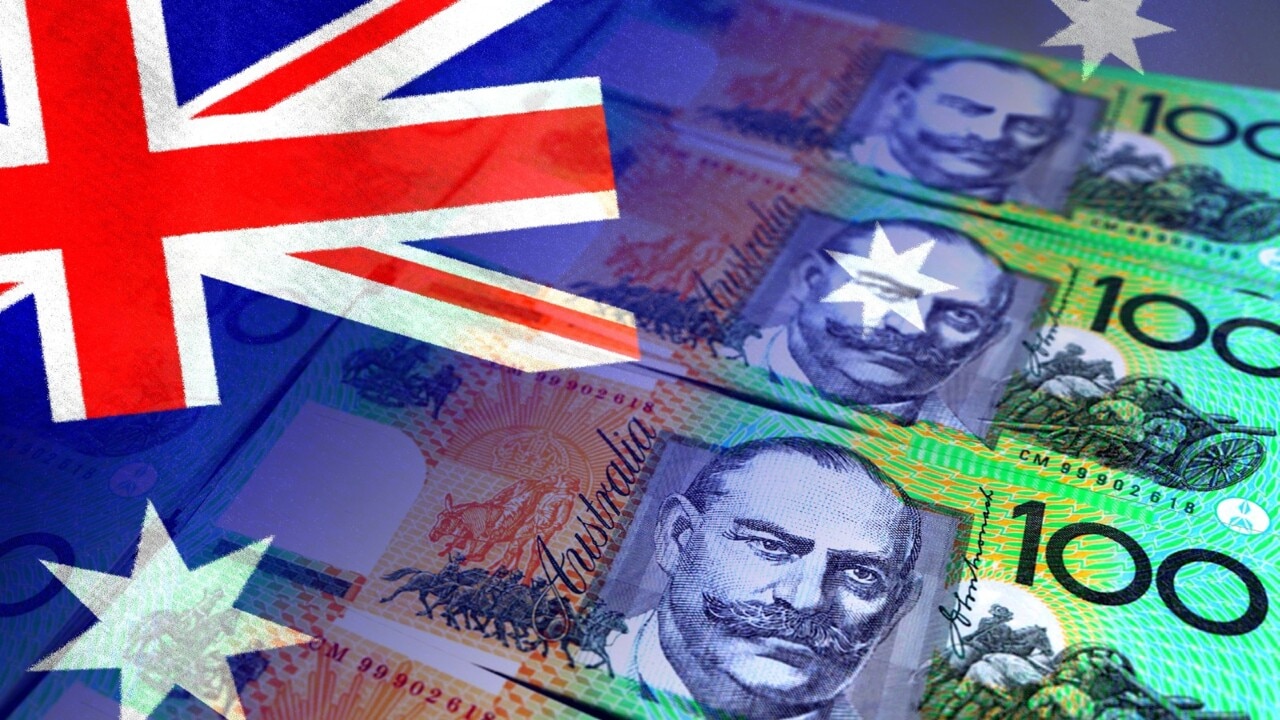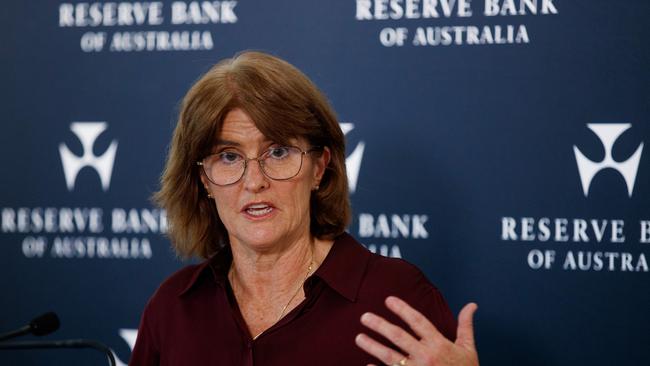Inflation data, reporting season to test market optimism
The bulls are back after US data showed a healthy combination of economic resilience and lessening inflation that should see the Fed set markets up for policy easing, but local inflation and our earnings season looms.

Will Australian financial markets feed on US optimism as inflation data and earnings reports loom?
Bulls were back on track after US data showed a healthy combination of economic resilience and lessening inflation that should see the Federal Reserve set markets up for policy easing at its meeting this week.
Stocks continued to rebound, with the ASX 200 hitting a near two-week high of 8000 points during Monday’s trading session and CBA cementing its rank as the nation’s most valuable company with a new record high of $134.90.
The Aussie dollar was supported above a two-week low of US65.15c after diving 4 per cent from a six-month high of US68c in the past three weeks as US share market volatility began to spike up from “complacent” levels amid the biggest fall in US tech giants in the past two years.
But Wednesday’s release of June quarter CPI data now looms as an important test of bullish sentiment in equities and bonds as investors attempt to gauge the Reserve Bank’s reaction in the event that core inflation rises to 4.0 per cent on year, versus a forecast of 3.8 per cent.
The domestic interest rate outlook will also feed into the corporate earnings outlook as the August reporting season fires up this week. Rio Tinto is due to report its first half results early Wednesday.

With a rate hike decision at next week’s RBA board meeting now priced as only a 23 per cent chance, market positioning may be “somewhat vulnerable” in the event that the central bank does hike on the back of a “hot” CPI report, as expected by six financial markets economists.
The cash rate target has been at a more than 12-year high of 4.35 per cent since November.
“An August rate hike would complicate the outlook and come at an inopportune time for equities,” says Morgan Stanley Australia equity strategist, Chris Nicol.
“Whilst inflation is remaining stickier and in services at least still rising, the evidence of some slowdown in domestic-facing sectors, like housing activity and discretionary consumption, has been building.
A further hike and continued hawkish bias from the central bank in its outlook is likely to “prompt extended weakness in domestic trading conditions and encourage further thrifting in behaviour” that would “challenge” the earnings outlook for domestic facing companies.
Of course, the RBA tends to acknowledge the impact of a given policy change by lessening its prevailing policy guidance when it makes such a change. But if it hikes again, it will be hard to rule out a follow-up hike, even though its probability may be reduced by the economic impact.

Mr Nicol said the current sanguine approach to credit-quality risks evident in the elevated price-to-earnings multiples of Australian bank shares would also have to be reconsidered.
Bleaker housing activity signals eyed by Morgan Stanley would “continue to flash.”
An August hike would probably also put upward pressure on the Aussie dollar, reducing the gap in policy restrictiveness for Australia relative to other G10 central banks.
“For much of this year, we have seen a consensus bias to want to look through any impact from tighter monetary policy and jump any earnings gaps to the next stage of the cycle,” he said.
“Should our additional rate hike call become consensus, the potential harder landing that comes with that is not priced into earnings multiples, in our view, and would pressure index direction.”
In terms of its recommended positioning, Morgan Stanley’s model equities portfolio is underweight banks, consumer, and housing-linked sectors. Its overweight sectors are resources, non-bank financials, global healthcare, and it also likes select quality growth stocks.
At the same time, Macquarie Equities warns that the recent downgrading of ASX company earnings estimates is likely to continue in August, potentially weighing on the local share market.
Since mid-May, a net 14 per cent of ASX 200 companies have been downgraded by the S&P/ASX 200 index has risen about 3 per cent on price-to-earnings multiple expansion.
The PE of the index “remains elevated” at around 16.7 times versus a long-term average of 14.8.
“This is a big turnaround from the positive revisions in March and April when the cycle was still accelerating,” said Macquarie’s Australian equity strategist, Matt Brooks.
“Unfortunately, downgrades are likely to continue in August, which is seasonally the worst month for revisions.” Net revisions to ASX 200 company earnings estimates in August were last positive in 2003-06. With uncertainties over the cycle, margins, rates and the US election, Brooks expects conservative initial guidance, which often leads to downgrades.
In aggregate, ASX 200 earnings are forecast to fall 6 per cent for the 2024 financial year before rising 10 per cent in financial 2025 amid a 23 rebound in resources sector earnings.
With the Fed expected to ease, investors have been “looking past” the financial 2024 earnings decline to the expected rebound. But with equity sentiment already bullish and the global cycle – as defined by the OECD Leading Indicator – shifting to a slowdown, the delivery of those bullish expectations for earnings per share will be “key to supporting share prices.”
Brooks also noted that there has been a negative skew in market reactions in the current US quarterly reporting season. Shares of US companies that missed expectations have fallen about twice as much as the gains in shares of companies that beat expectations.
“Given equity market sentiment is bullish, we could see a similar negative skew in reaction to earnings surprises during Australia’s reporting season.”






To join the conversation, please log in. Don't have an account? Register
Join the conversation, you are commenting as Logout